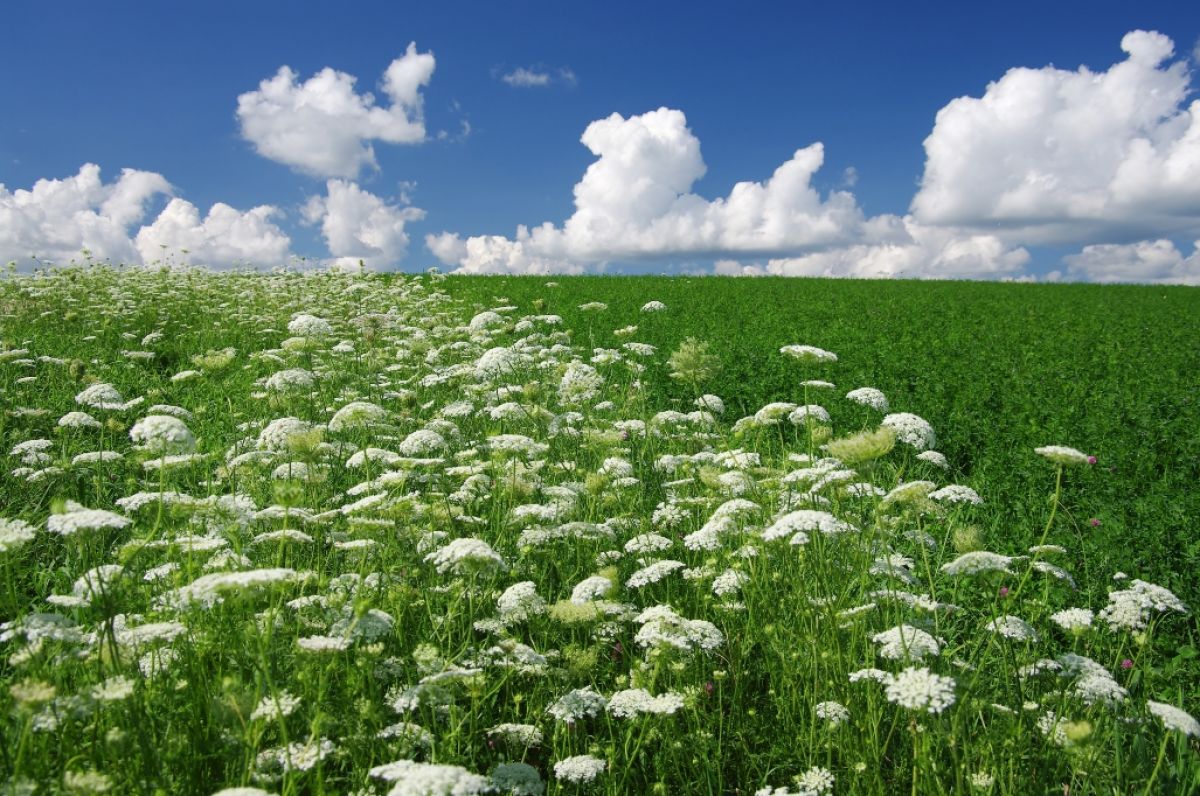Queen Anne's Lace, Daucus carota, is a wildflower native to the Mediterranean region. It is a member of the wild carrot family. The shape of the flower caused the ancient English botanists to give it the common name of “bird's nest.”
The name Queen Anne's Lace is probably in honor of Anne of Denmark, the wife of the English King James I. The puritans brought both the wild and the domesticated carrots to the New World and used one type for food and the other for its healing properties.
All carrots are biennial, producing fern-like leaves the first year, and then they bloom and set seed and die off the following year. The flower umbels are made up of thousands of tiny florets. These little flowers are extremely attractive to bees, butterflies, and beetles that pollinate them. Farmers do not care for wild carrots that grow in their fields and on roadsides and produce thousands of seeds that produce more plants.
The flowers can be harvested in the wild and used in flower arrangements. Children like to collect the flowers and put the stems in water that has colored dye in it to make the flowers colorful. Since these plants spread so easily, they are rarely cultivated in gardens, but most people recognize them and enjoy seeing them in the wild.
This is Moya Andrews, and today we focused on Queen Anne's Lace.










